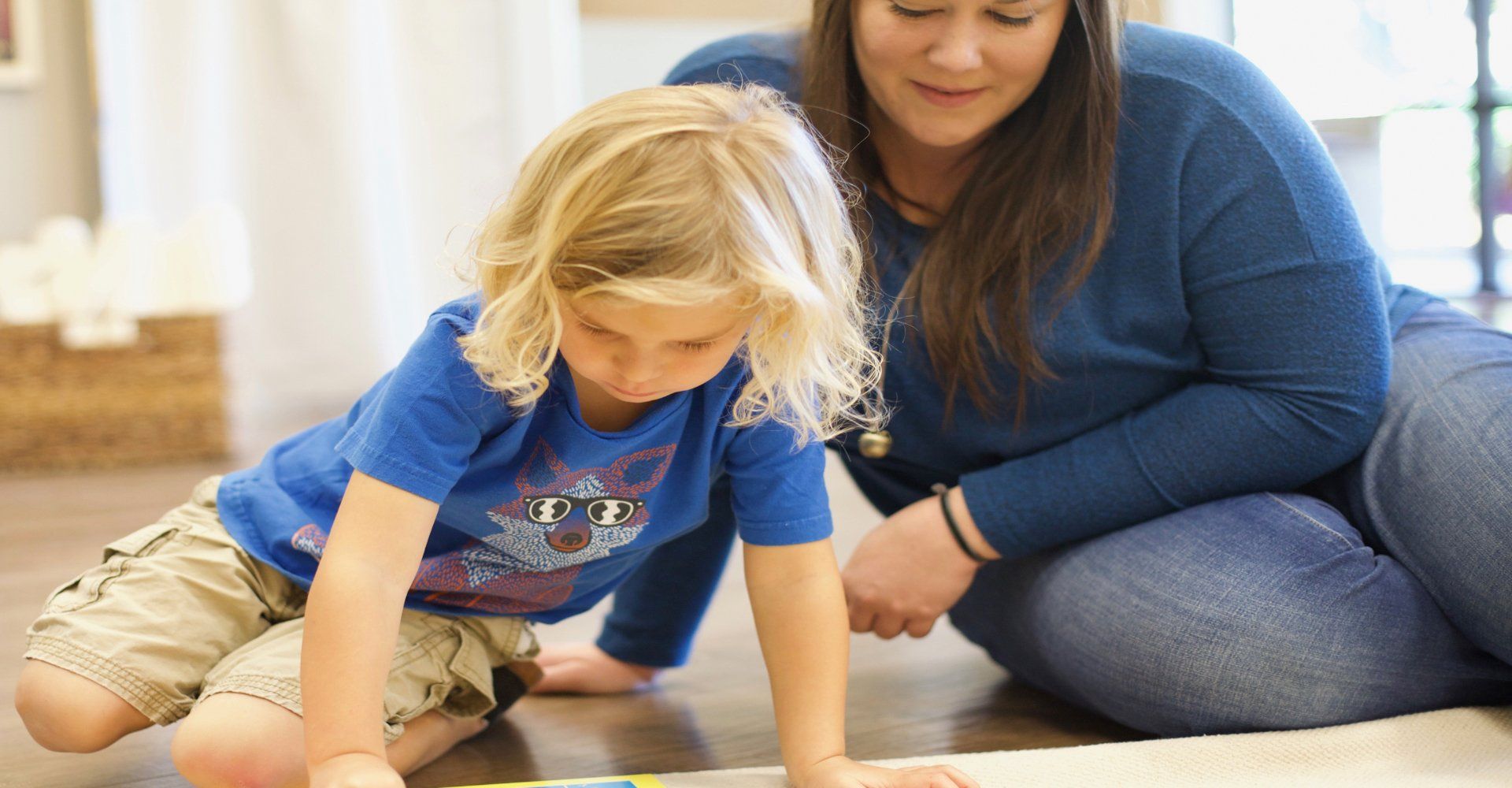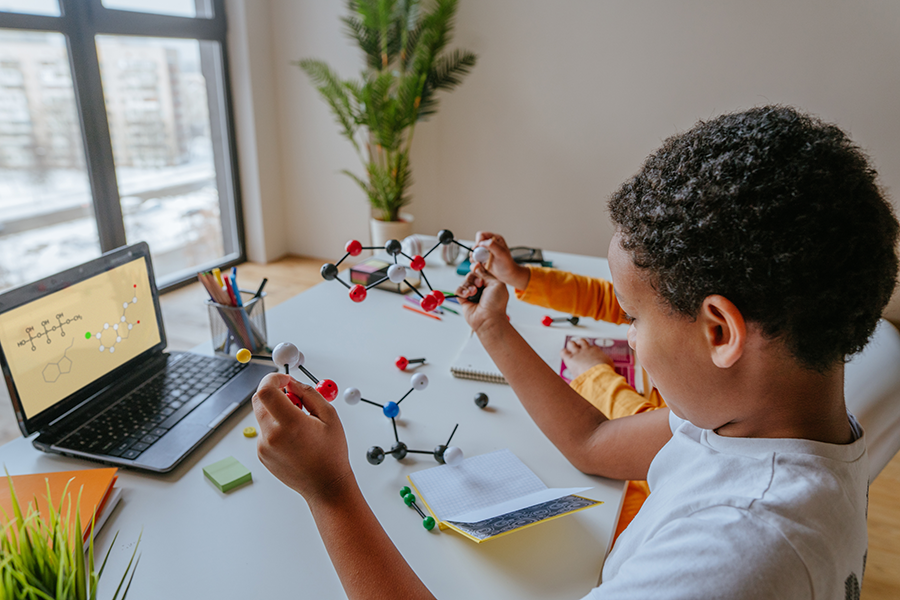Metacognition: How Thinking About Thinking Can Help Kids
When kids hit difficult problems — the seemingly insurmountable English essay, a math test that takes on epic proportions, social struggles that leave them feeling frustrated — it can be tempting to give up and resort to four words no parent ever wants to hear: “I can’t do it.” Kids need to be able to make the transition from ‘I can’t’ to the proactive ‘How can I?’
CLICK TO FACEBOOK SHAREClick To Tweet
In order to thrive, kids need to be able to make the transition from the negative “I can’t” to the proactive “How can I?”
To do that, they need to think about why they’re stuck, what’s frustrating them, what they would need to get unstuck. They need to think about their own thinking.
There’s a word for that, and it’s metacognition.
Metacognition is a big word for something most of us do every day without even noticing. Reflecting on our own thoughts is how we gain insight into our feelings, needs, and behaviors — and how we learn, manage, and adapt to new experiences, challenges, and emotional setbacks. It’s the running conversation we have in our heads, mentally sounding ourselves out and making plans. Training kids to use it proactively to overcome obstacles, it turns out, can be a powerful tool.
More and more studies are suggesting that kids who are taught to use metacognitive strategies early on are more resilient and more successful, both in and out of school.
“I view metacognition as a goal,” says Marc Gladstone, a learning specialist. “Getting into the habit of using metacognitive strategies early on helps kids become more independent learners and bolsters self-advocacy skills.”
What is metacognition and how does it work?
“Metacognitive thinking teaches us about ourselves,” says Tamara Rosier, a learning coach who specializes in metacognitive techniques. “Thinking about our thinking creates perspective — perspective that leaves room for change.”
She gives an example: “Instead of saying, ‘Math tests make me anxious,’ we’re asking ourselves, ‘What is it about math tests that makes me feel anxious and what can I do to change that?’ ”
Kids who are taught to think of themselves as being “good” or “bad” at a particular task can have a fixed mindset that makes them passive in approaching a challenge: either they can do it or they can’t, but they aren’t likely to think they can change that outcome.
Teaching kids to become more metacognitive helps them move from a mindset that leaves little room for change to a mindset which promotes self-awareness and resilience.
Help for kids with learning issues
Helping your child learn to work through difficult situations (or homework assignments, as the case may be) without becoming overwhelmed or giving up is especially valuable for kids with learning issues who may need to come up with different strategies than other students in the class.
For example:
- A child with ADHD who struggles to stay on task is likely to feel frustrated and anxious when he’s assigned a long essay. If he’s unable to reflect on why the project upsets him he might think, “Everyone else is having an easy time. I’m just bad at writing.”
- A kid who’s learned to reflect on his own learning process, on the other hand, could look at the situation and say, “I always feel like this when I have to work for a long time. Maybe if I take breaks every hour or so I’ll feel less stressed out.” By taking a metacognitive approach, he’s able to manage his frustration and find a better way to approach big assignments in the future.
Great for self-regulation
Metacognitive skills are not only excellent tools for kids who learn differently, and often find themselves struggling to keep up. They also enable kids to self-regulate when faced with challenges, especially unexpected ones.
“One of the most powerful byproducts of metacognitive thinking is increased self-regulation,” says Gladstone.
Being able to self-regulate helps kids manage experiences that might otherwise overwhelm them. For example, take two girls who have to audition for a school play, both of whom are struggling with unusually difficult material.
A girl who is regularly told how talented she is and is used to being praised for her performances is likely to get frustrated and overwhelmed at the sheer thought of performing badly.
But a girl who is praised for her ability to work hard and persevere when she’s faced with a challenge can draw on her metacognitive skills to help her manage her nerves and help her figure out a way of rehearsing that works better for her.
Quieting negative self-talk
Fallout from a fixed mindset often takes the form of self-criticism. The negative feelings kids experience when they feel frustrated easily turn into negative self-talk. “If I’m so smart, why did I fail the test? I’m not smart. I’m useless.”
“When you place your value on being ‘smart,’ anything that makes you feel less than smart is devastating,” says Rosier. “A lot of kids develop a negative inner voice, and they develop it in place of metacognition.”
This negative voice is sneaky, she explains, often masquerading as a coach. “You can mistake self-criticism for motivation. What we want to do is get rid of the negative inner voice and replace it with metacognitive thinking that helps your child find new ways to manage her challenges instead of beating herself up about them.”
How to encourage metacognition
How do you help your child start becoming more meta?” Metacognitive questions, says Rosier, will help your child begin thinking in a more reflective way. Questions should be:
- Open-ended. Give your child some space to reflect on his thinking: Can you tell me more about why you think that?
- Non-blaming. It can be hard to stay open when kids are acting out, but asking them to think about their behavior can help them learn to manage difficult situations in a better way: Why do you think you got so upset when Dad changed the channel?
- Solution-focused. Encourage him to think about how he can use his understanding to change things in the future: How could you handle that differently next time?
- Process-oriented. Ask questions that help your child get a better idea of how his thought process works: How will you know when this drawing is finished?
Be patient
“When you teach kids to think about their behavior differently, they begin to behave differently,” says Rosier. But she warns that it’s important not to expect instant results. Learning to think metacognitively is a process, and parents may have to accept that a lot of the work is happening behind the scenes.
“Of course we want to see progress, but our children — especially teenagers — don’t always share their thinking with us and that’s okay.”
Just asking the questions gets the metacognitive work going internally, even if it’s not visible to the parental eye, Rosier explains. The benefits are the same, she says, even if all you get is a grunt in return.
Learning to learn
Asking questions at home will help kids begin to use metacognitive strategies in their schoolwork, too. For many kids — especially those with learning differences — this can be harder than it sounds. It’s easy to get bogged down by poor study habits, procrastination, homework meltdowns, and test stress.
If your child is struggling to work through a long paper, ask questions that help him use his metacognitive skills to try a different approach.
- What do you think is making it hard for you to work on this paper right now?
- What are some strategies that have helped you do well on similar papers in the past?
- Can you use those insights to help you with the work you’re doing now?
Asking metacognitive questions will help him clarify his process, manage his anxiety, and find a better way to approach his paper, but the benefits don’t end when the assignment is done.
The more your child is able to understand his learning process the easier it will be for him to figure out what strategies and supports work best for him — knowledge that will help him succeed — both now and as he grows up.
You might also like




